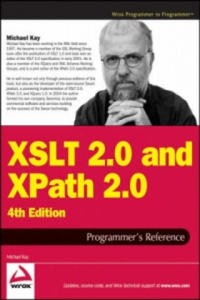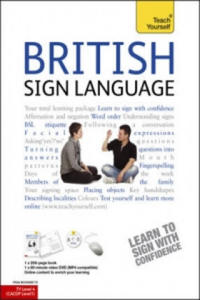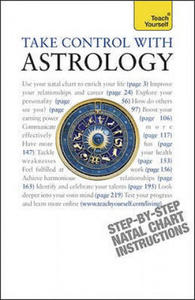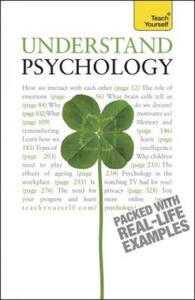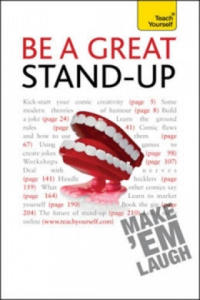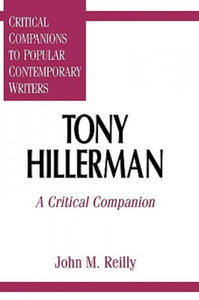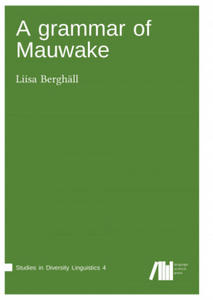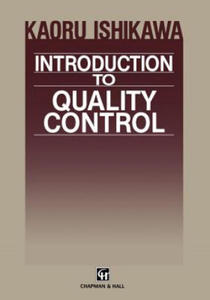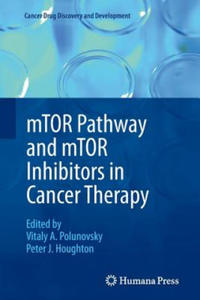libristo chapter 13 press
- znaleziono 17 produktów w 3 sklepach
Love Chapter Paraclete Press
Książki / Literatura obcojęzyczna
St. Paul was the first to really define love. St. John Chrysostom unpacks it. One of the most important passages in the Scriptures, First Corinthians 13 is often read and rarely followed. Medieval theologian, John Chrysostom, wa
Sklep: Libristo.pl
XSLT 2.0 and XPath 2.0 Programmer's Reference 4e John Wiley & Sons Inc
Książki / Literatura obcojęzyczna
This book is primarily a practical reference book for professional XSLT developers. It assumes no previous knowledge of the language, and many developers have used it as their first introduction to XSLT; however, it is not structured as a tutorial, and there are other books on XSLT that provide a gentler approach for beginners. The book does assume a basic knowledge of XML, HTML, and the architecture of the Web, and it is written for experienced programmers. There's no assumption that you know any particular language such as Java or Visual Basic, just that you recognize the concepts that all programming languages have in common. The book is suitable both for XSLT 1.0 users upgrading to XSLT 2.0, and for newcomers to XSLT. The book is also equally suitable whether you work in the Java or .NET world. As befits a reference book, a key aim is that the coverage should be comprehensive and authoritative. It is designed to give you all the details, not just an overview of the 20 percent of the language that most people use 80 percent of the time.It's designed so that you will keep coming back to the book whenever you encounter new and challenging programming tasks, not as a book that you skim quickly and then leave on the shelf. If you like detail, you will enjoy this book; if not, you probably won't. But as well as giving the detail, this book aims to explain the concepts, in some depth. It's therefore a book for people who not only want to use the language but who also want to understand it at a deep level. The book aims to tell you everything you need to know about the XSLT 2.0 language. It gives equal weight to the things that are new in XSLT 2.0 and the things that were already present in version 1.0. The book is about the language, not about specific products. However, there are appendices about Saxon (the author's own implementation of XSLT 2.0), about the Altova XSLT 2.0 implementation, and about the Java and Microsoft APIs for controlling XSLT transformations, which will no doubt be upgraded to handle XSLT 2.0 as well as 1.0. A third XSLT 2.0 processor, Gestalt, was released shortly before the book went to press, too late to describe it in any detail. But the experience of XSLT 1.0 is that there has been a very high level of interoperability between different XSLT processors, and if you can use one of them, then you can use them all.In the previous edition we split XSLT 2.0 and XPath 2.0 into separate volumes. The idea was that some readers might be interested in XPath alone. However, many bought the XSLT 2.0 book without its XPath companion and were left confused as a result; so this time, the material is back together. The XPath reference information is in self-contained chapters, so it should still be accessible when you use XPath in contexts other than XSLT. The book does not cover XSL Formatting Objects, a big subject in its own right. Nor does it cover XML Schemas in any detail. If you want to use these important technologies in conjunction with XSLT, there are other books that do them justice. This book contains twenty chapters and eight appendixes (the last of which is a glossary) organized into four parts. The following section outlines what you can find in each part, chapter, and appendix. Part I: Foundations: The first part of the book covers essential concepts. You should read these before you start coding.If you ignore this advice, as most people do, then you read them when you get to that trough of despair when you find it impossible to make the language do anything but the most trivial tasks. XSLT is different from other languages, and to make it work for you, you need to understand how it was designed to be used. Chapter 1: XSLT in Context: This chapter explains how XSLT fits into the big picture: how the language came into being and how it sits alongside other technologies. It also has a few simple coding examples to keep you alert. Chapter 2: The XSLT Processing Model: This is about the architecture of an XSLT processor: the inputs, the outputs, and the data model. Understanding the data model is perhaps the most important thing that distinguishes an XSLT expert from an amateur; it may seem like information that you can't use immediately, but it's knowledge that will stop you making a lot of stupid mistakes. Chapter 3: Stylesheet Structure: XSLT development is about writing stylesheets, and this chapter takes a bird's eye view of what stylesheets look like.It explains the key concepts of rule-based programming using templates, and explains how to undertake programming-in-the-large by structuring your application using modules and pipelines. Chapter 4: Stylesheets and Schemas: A key innovation in XSLT 2.0 is that stylesheets can take advantage of knowledge about the structure of your input and output documents, provided in the form of an XML Schema. This chapter provides a quick overview of XML Schema to describe its impact on XSLT development. Not everyone uses schemas, and you can skip this chapter if you fall into that category. Chapter 5: The Type System: XPath 2.0 and XSLT 2.0 offer strong typing as an alternative to the weak typing approach of the 1.0 languages. This means that you can declare the types of your variables, functions, and parameters, and use this information to get early warning of programming errors. This chapter explains the data types available and the mechanisms for creating user-defined types. Part II: XSLT and XPath Reference: This section of the book contains reference material, organized in the hope that you can easily find what you need when you need it.It's not designed for sequential reading, though you might well want to leaf through the pages to discover what's there. Chapter 6: XSLT Elements: This monster chapter lists all the XSLT elements you can use in a stylesheet, in alphabetical order, giving detailed rules for the syntax and semantics of each element, advice on usage, and examples. This is probably the part of the book you will use most frequently as you become an expert XSLT user. It's a "no stone unturned" approach, based on the belief that as a professional developer you need to know what happens when the going gets tough, not just when the wind is in your direction. Chapter 7: XPath Fundamentals: This chapter explains the basics of XPath: the low-level constructs such as literals, variables, and function calls. It also explains the context rules, which describe how the evaluation of XPath expressions depends on the XSLT processing context in which they appear. Chapter 8: XPath: Operators on Items: XPath offers the usual range of operators for performing arithmetic, boolean comparison, and the like.However, these don't always behave exactly as you would expect, so it's worth reading this chapter to see what's available and how it differs from the last language that you used. Chapter 9: XPath: Path Expressions: Path expressions are what make XPath special; they enable you to navigate around the structure of an XML document. This chapter explains the syntax of path expressions, the 13 axes that you can use to locate the nodes that you need, and associated operators such as union, intersection, and difference. Chapter 10: XPath: Sequence Expressions: Unlike XPath 1.0, in version 2.0 all values are sequences (singletons are just a special case). Some of the most important operators in XPath 2.0 are those that manipulate sequences, notably the "for" expression, which translates one sequence into another by applying a mapping. Chapter 11: XPath: Type Expressions: The type system was explained in Chapter 5; this chapter explains the operations that you can use to take advantage of types. This includes the "cast" operation which is used to convert values from one type to another.A big part of this chapter is devoted to the detailed rules for how these conversions are done.Chapter 12: XSLT Patterns: This chapter returns from XPath to a subject that's specific to XSLT. Patterns are used to define template rules, the essence of XSLT's rule-based programming approach. The reason for explaining them now is that the syntax and semantics of patterns depends strongly on the corresponding rules for XPath expressions. Chapter 13: The Function Library: XPath 2.0 includes a library of functions that can be called from any XPath expression; XSLT 2.0 extends this with some additional functions that are available only when XPath is used within XSLT. The library has grown immensely since XPath 1.0. This chapter provides a single alphabetical reference for all these functions. Chapter 14: Regular Expressions: Processing of text is an area where XSLT 2.0 and XPath 2.0 are much more powerful than version 1.0, and this is largely through the use of constructs that exploit regular expressions. If you're familiar with regexes from languages such as Perl, this chapter tells you how XPath regular expressions differ. If you're new to the subject, it explains it from first principles.Chapter 15: Serialization: Serialization in XSLT means the ability to generate a textual XML document from the tree structure that's manipulated by a stylesheet. This isn't part of XSLT processing proper, so (following W3C's lead) it's separated it into its own chapter. You can control serialization from the stylesheet using an declaration, but many products also allow you to control it directly via an API. Part III: Exploitation: The final section of the book is advice and guidance on how to take advantage of XSLT to write real applications. It's intended to make you not just a competent XSLT coder, but a competent designer too. The best way of learning is by studying the work of others, so the emphasis here is on practical case studies. Chapter 16: Extensibility: This chapter describes the "hooks" provided in the XSLT specification to allow vendors and users to plug in extra functionality. The way this works will vary from one implementation to another, so we can't cover all possibilities, but one important aspect that the chapter does cover is how to use such extensions and still keep your code portable.Chapter 17: Stylesheet Design Patterns: This chapter explores a number of design and coding patterns for XSLT programming, starting with the simplest "fill-in-the-blanks" stylesheet, and extending to the full use of recursive programming in the functional programming style, which is needed to tackle problems of any computational complexity. This provides an opportunity to explain the thinking behind functional programming and the change in mindset needed to take full advantage of this style of development. Chapter 18: Case Study: XMLSpec: XSLT is often used for rendering documents, so where better to look for a case study than the stylesheets used by the W3C to render the XML and XSLT specifications, and others in the same family, for display on the web? The resulting stylesheets are typical of those you will find in any publishing organization that uses XML to develop a series of documents with a compatible look-and-feel. Chapter 19: Case Study: A Family Tree: Displaying a family tree is another typical XSLT application.This example with semi-structured data-a mixture of fairly complex data and narrative text-that can be presented in many different ways for different audiences. It also shows how to tackle another typical XSLT problem, conversion of the data into XML from a legacy text-based format. As it happens, this uses nearly all the important new XSLT 2.0 features in one short stylesheet. But another aim of this chapter is to show a collection of stylesheets doing different jobs as part of a complete application. Chapter 20: Case Study: Knight's Tour: Finding a route around a chessboard where a knight visits every square without ever retracing its steps might sound a fairly esoteric application for XSLT, but it's a good way of showing how even the most complex of algorithms are within the capabilities of the language. You may not need to tackle this particular problem, but if you want to construct an SVG diagram showing progress against your project plan, then the problems won't be that dissimilar. Part IV: Appendices: A ppendix A: XPath 2.0 Syntax Summary: Collects the XPath grammar rules and operator precedences into one place for ease of reference.Appendix B: Error Codes: A list of all the error codes defined in the XSLT and XPath language specifications, with brief explanations to help you understand what's gone wrong. Appendix C: Backward Compatibility: The list of things you need to look out for when converting applications from XSLT 1.0. Appendix D: Microsoft XSLT Processors: Although the two Microsoft XSLT processors don't yet support XSLT 2.0, we thought many readers would find it useful to have a quick summary here of the main objects and methods used in their APIs. Appendix E: JAXP: the Java API for XML Processing: JAXP is an interface rather than a product. Again, it doesn't have explicit support yet for XSLT 2.0, but Java programmers will often be using it in XSLT 2.0 projects, so the book includes an overview of the classes and methods available. Appendix F: Saxon: At the time of writing Saxon (developed by the author of this book) provides the most comprehensive implementation of XSLT 2.0 and XPath 2.0, so its interfaces and extensions are covered in some detail. Appendix G: Altova: Altova, the developers of XML Spy, have an XSLT 2.0 processor that can be used either as part of the development environment or as a freestanding component.This appendix gives details of its interfaces. Appendix H: Glossary Note: CD-ROM/DVD and other supplementary materials are not included as part of eBook file.
Sklep: Libristo.pl
Basic Accounting John Murray Press
Książki / Literatura obcojęzyczna
Is this the right book for me? Basic Accounting is a complete, step-by-step course in elementary accounting. Giving clear and concise explanations of accounting principles and practice including PAYE, cashflow statements, accounting for share capital, accounting standards and non-financial reporting, it is perfect for the newcomer to basic accounting, the first- level accounting student or anybody needing to brush up their accounting skills. No prior knowledge of bookkeeping or accounting is assumed. Clear explanations, diagrams and worked examples enable you to master the basic principles then apply them to practical examples to consolidate and test your knowledge.Basic Accounting includes: Chapter 1: Introduction Chapter 2: Source documents Chapter 3: The ledger system Chapter 4: Balancing the cash book Chapter 5: Double entry theory and practice Chapter 6: The trial balance Chapter 7: Gross profit and stock Chapter 8: Trading and profit and loss and accounts Chapter 9: The balance sheet Chapter 10: Illustrative example Chapter 11: Cash and bank transactions Chapter 12: Bank reconciliation Chapter 13: The petty cash book Chapter 14: Credit transactions and suppliers' accounts Chapter 15: The accounts of credit customers Chapter 16: Purchases and sales returns Chapter 17: VAT and PAYE Chapter 18: Classification of ledger accounts Chapter 19: Final accounts of a sole trader Chapter 20: Interpretation of accounts Chapter 21: Cash flow statements Chapter 22: Capital and revenue expenditure Chapter 23: The genera; journal Chapter 24: Depreciation of fixed assets Chapter 25: Bad debts and provision for bad debts Chapter 26: Year-end adjustments Chapter 27: Incomplete records and single entry Chapter 28: Non-trading concerns and club accounts Chapter 29: Control Accounts Chapter 30: Partnership accounts Chapter 31: Accounting for management Chapter 32: Costs of production and manufacturing accounts Chapter 33: Introduction to limited companies Chapter 34: Accounting for share capital Chapter 35: The final accounts of a limited company Chapter 36: Accounting standards Chapter 37: Non-financial reporting Chapter 38: Computerized accounting Learn effortlessly with easy-to-read page design and interactive features: Not got much time?One, five and ten-minute introductions to key principles to get you started. Author insights Lots of instant help with common problems and quick tips for success, based on the authors' many years of experience. Test yourself Tests in the book and online to keep track of your progress. Extend your knowledge Extra online articles to give you a richer understanding of accounting. Try this Innovative exercises illustrate what you've learnt and how to use it.
Sklep: Libristo.pl
The code of administrative proceedings. Kodeks postępowania administracyjnego (wydanie 2) C.H. Beck
Prawo / administracyjne
Foreword This book contains a bilingual, Polish-English edition of the Polish Code of Administrative Proceedings (
Sklep: Księgarnia.Poltax.waw.pl
British Sign Language: Teach Yourself John Murray Press
Książki / Literatura obcojęzyczna
This product contains a book and DVD. Is this the right product for me? Do you want to be able to understand and use British Sign Language confidently? All you need is this best-selling course. Learn everyday, useful BSL through real-life situations that make the grammar and vocabulary easy and memorable. Hundreds of line illustrations throughout the book and constant references to video clips on the DVD make learning fast and fun. British Sign Language (BSL) is used in the United Kingdom. The number of Deaf people in the UK using BSL has been put at about 50,000; there are in addition many more hearing people who use BSL to communicate with Deaf users. Sign languages are not related to spoken languages and BSL is completely different, for example, from American Sign Language. Sign language conveys meaning through the use of space and movement of the hands, body, face and head. We know that many hearing people are keen to learn BSL (it is a very popular evening class course, for example). But there is a lack of good teaching materials written in English for hearing learners of BSL, which this course fills.Get Started in British Sign Language follows the BSL curricula taught currently in colleges (Council for the Advancement of Communication with Deaf People CACDP and Institute of BSL) and therefore will be able to be used as support material by learners, as well as providing a complete grounding in the structure and grammar of BSL. Why is this the best course on the market? - It's Deaf-led (so often deaf people are not in charge) - It has Deaf authenticity (a bit like a Black person writing a book on Black Culture) - It has a Deaf illustrator (how many BSL books are illustrated by a Deaf person? Go on, check) - It has Deaf authors (Yes, go on and check! Authors, not 'contributors'!) - It has a DVD which can be downloaded to a phone, computer, TV, laptop (the possibilities are endless) - It's fun (just like the other Teach Yourself books) - The format is clear - lots of hand holding (you never need to ask 'what does this mean?')- Only BSL experts who are deaf are used as authors and advisers (not hearing professors) Teach Yourself British Sign Language includes: Chapter 1: Starting out with BSL structure Chapter 2: More about Deaf people Chapter 3: BSL Structures Chapter 4: Deaf culture and BSL etiquette Chapter 5: Introduction to facial expressions Chapter 6: Asking 'wh-' questions Chapter 7: Asking 'yes'/'no' questions Chapter 8: More about questions Chapter 9: How to use facial expressions Chapter 10: BSL mouth patterns Chapter 11: Starting out with fingerspelling Chapter 12: Learning to fingerspell Chapter 13: Reading fingerspelling Chapter 14: Fingerspelling signs Chapter 15: Using fingerspelling in conversation Chapter 16: Other fingerspelt words: months Chapter 17: Starting out with placement Chapter 18: Describing a room Chapter 19: Introduction to referent handshapes Chapter 20: Understanding switching Chapter 21: Describing a room from memory Chapter 22: Understanding someone describing a scene from memory Chapter 23: Starting out with directions Chapter 24: Directions - describing localities Chapter 25: Complex directions: adding more information Chapter 26: Using directions with landmarks Chapter 27: Colours Chapter 28: What next?
Sklep: Libristo.pl
Take Control With Astrology: Teach Yourself John Murray Press
Książki / Literatura obcojęzyczna
Is this the right book for me? If you want to make better lifestyle, relationship and professional choices, Take Control with Astrology will give you the skills you need. It will show you how to correctly read your natal chart, so you can learn your strengths and weaknesses, and will help you to understand the connection between you, the sun and the stars - and what it means for your life. Even skeptics will be amazed by the enhanced self-awareness that an informed approach to astrology can offer, as this sensitive but practical book explains.Take Control with Astrology: Teach Yourself includes: Part one: The basics Chapter 1: The components of the natal chart Chapter 2: The Sun signs Chapter 3: The houses Chapter 4: The planets Chapter 5: The aspects Part two: Interpreting a natal chart Chapter 6: Self-expression Chapter 7: Possessions and earning power Chapter 8: Communication Chapter 9: The home and roots Chapter 10: Recreation, romance and creativity Chapter 11: Health and work Chapter 12: Relationships and partnerships Chapter 13: Financial matters and regenerative powers Chapter 14: Further education and travel Chapter 15: Goals and career Chapter 16: Social success and group endeavors Chapter 17: Your inner-life Part three: Astrology and other systems Chapter 18: Numerology Chapter 19: Astrology and the tarot Chapter 20: Astrology and cosmic ordering Teach Yourself methods: Not got much time? One, five and ten-minute introductions to key principles to get you started. Author insights Lots of instant help with common problems and quick tips for success, based on the author's many years of experience. Test yourself Tests in the book and online to keep track of your progress.Extend your knowledge Extra online articles to give you a richer understanding of astrology. Five things to remember Quick refreshers to help you remember the key facts. Try this Innovative exercises illustrate what you've learnt and how to use it.
Sklep: Libristo.pl
Business Data Communications & Networking Prentice Hall
Informatyka
For undergraduate, graduate , and MBA courses in Business Data Communications, Introduction to Data Communications, Telecommunications, and Introduction to Networking. The most current data communications text on the market, this comprehensive book uses a unique modular approach. Most teachers will want to cover the material in the 12 core chapters. This will leave time for hands-on work or additional conceptual material. The 8 advanced modules have extra material that some teachers will wish to cover depending on their particular course goals. Companion Website offers even more material. This approach allows selective emphasis without requiring the teacher to assemble his or her own additional material. Features and Benefits NEW - Modular approach - Book has 12 core chapters for a well-structured course with some free time plus 8 advanced modules for selective emphasis depending on the teachers course goals, highly regarded, this modular approach allows for selective emphasis enabling full focus upon the professors course goals. NEW - More but smaller core chapters, although there are more core chapters, they are smaller for easier reading. The total material is about the same in the two previous editions.Case studies with discussion questions. Kept at the companion Website to allow recent cases. Up-dates for new information since the book went to press. Downloads- PowerPoint presentations and End-of-Chapter questions, ensures that course material is current and provides an Instructor-only portion of the Website for special material. NEW - End-of-chapter questions and Test Your Knowledge subsections, allow students to review all key points in the chapter. Graded into core review questions, detailed review questions, and thought questions. By assigning particular questions, teachers can direct student learning. Also, at the end of each section in the book, the Test Your Knowledge subsection lists end-of-chapter questions to answer for that section. NEW - Instructor CD - Contains PowerPoint presentations, Transparencies (Word files), Test bank, and Instructor Manual with model syllabus and end-of-chapter answer keys. NEW - 85% Rewrite - Although the topic flow is largely the same as the second edition, the chapters and modules have been rewritten, not simply edited. Many changes are due to new developments in the field and to adopters comments. NEW - Transparencies, for every figure in the book. Some figures have builds. NEW - More open book design, for easier readability. NEW - Vignette at the beginning of each chapter raises issues that must be resolved using information in the chapter, thought question at end of chapter usually asks for student solutions. Begins with the familiar - The book begins with Internet standards (Chapters 1-5) and then small PC networks on simple LANs (Chapters 6-7), allows students to learn abstract concepts in concrete and familiar contexts. Detailed PowerPoint presentations - Full pre-made lecture presentations. Not just a few selected slides, provides instructors and students with a multimedia guide for every chapter and module. Created by the author. Modifiable by the teacher. MORE - Case studies at the companion Website so that they can be kept hot and fresh, now provided for all chapters and some modules. -UP-TO-DATE MATERIAL. Internet and TCP/IP - Heavy emphasis in Chapters 1-3, considerable emphasis throughout book. Module A. MORE - Quality of Service (QoS). Introduced in Chapter 1, strong treatment in Chapter 8. NEW - Telephony - Now integrated into the core chapters. Hierarchical circuit switching (Chapter 1), IP telephony (Chapter 11), cellular service (Chapter 12). MORE - Stronger focus on LAN switching, which now dominates in large LANs. In Ethernet, switches and hubs are introduced equally, and Chapter 8 has a strong section on LAN switching. VLANs, Layer 3 switching. COMPLETELY REVISED - Security now has a full chapter (Chapter 10) and a full module (Module F). Very up-to-date coverage. SSL, IPsec, Kerberos, etc. Even more on Frame Relay - Now dominates WANs. Full chapter on Internet access, including ADSL and cable modems (Chapter 5). NEW - Web-Host Integration, IBM Mainframe Systems, and SNA (Chapter 11). NEW - Analysis of alternative products with Net Present Value (NPV) analysis and multicriteria product selection
Sklep: Albertus.pl
Understand Psychology John Murray Press
Książki / Literatura obcojęzyczna
Is this the right book for me? Understand Psychology will take you through every aspect of the subject, from child development and social influences to the role of memories and emotions. The clear structure of the book, packed full of practical examples, makes it easy to learn the essentials whether for an exam or just out of personal interest.Understand Psychology includes: Chapter 1: Understanding psychology Understanding the mind Levels of explanation Areas of psychology Chapter 2: Self and others The first relationships The self-concept Cultural and social influences Chapter 3: Understanding other people Co-operation, compliance and obediance Understanding other people Social representations Chapter 4: Emotional living Emotions Negative emotions Stress and coping Positive psychology Chapter 5: Consciousness and the brain Biological rhythms Drugs and consciousness Sleep and dreaming Chapter 6: Motivation Physical motives Behavioural motives Cognitive motives Social motivation Chapter 7: Cognition Thinking Perception Memory Chapter 8: Evolution, genetics and learning Evolution Genetic mechanisms Levels of learning Chapter 9: Learning and intelligence Forms of learning Social learning Intelligence Chapter 10: Childhood and adolescence Childhood Adolescence Chapter 11: Adulthood, retirement and ageing Adulthood Retirement Ageing Chapter 12: Working life Why do people work?Human resource management Organizational culture Chapter 13: Leisure Watching TV Computer games Sport psychology Chapter 14: Education and health The psychology of teaching and learning Counselling and therapy Health psychology Chapter 15: Living in the world Proxemics and privacy Sources of environmental stress Disasters and accidents Chapter 16: Developing psychological understanding What do psychologists do? Developing psychological knowledge Conducting psychological research ...Learn effortlessly with a new easy-to-read page design and interactive features: Not got much time? One, five and ten-minute introductions to key principles to get you started. Author insights Lots of instant help with common problems and quick tips for success, based on the author's many years of experience. Test yourself Tests in the book and online to keep track of your progress. Extend your knowledge Extra online articles to give you a richer understanding of the subject. Five things to remember Quick refreshers to help you remember the key facts. Try this Innovative exercises illustrate what you've learnt and how to use it.
Sklep: Libristo.pl
Be a Great Stand-up John Murray Press
Książki / Literatura obcojęzyczna
Is this the right book for me? Logan Murray has successfully taught the techniques of stand-up comedy to thousands, and in this book he distills his years of experience into the essential skills for a great and enjoyable performance. He will help you find your own creative streak and your funny side, build the confidence to deliver, and explain the finer details of stagecraft, from dealing with hecklers to coping with props. There is a full guide to the practicalities, from finding gigs to securing an agent, with plenty of valuable hints, tips and advice. Drawing on Logan's years of teaching and his own successful stand-up career, with top tips from some of the most well-known people in the business, it is guaranteed to bring a smile to both your face and that of your future audience. Be a Great Stand-up includes: Part one - Theory Chapter 1: Where do jokes come from? Chapter 2: Building a joke Chapter 3: Comedy ground rules Chapter 4: What sort of comic are you?Part two - Practical sessions Chapter 5: Unlocking your creativity Chapter 6: Emotional exaggeration Chapter 7: Creating material Chapter 8: Stagecraft Chapter 9: Microphone technique Chapter 10: Hecklers and crowd control Chapter 11: What other comics think Chapter 12: Business Chapter 13: Your first gig Chapter 14: The future Learn effortlessly with a new easy-to-read page design and interactive features: Not got much time? One, five and ten-minute introductions to key principles to get you started. Author insights Lots of instant help with common problems and quick tips for success, based on the author's many years of experience. Test yourself Tests in the book and online to keep track of your progress. Extend your knowledge Extra online articles to give you a richer understanding of the subject. Five things to remember Quick refreshers to help you remember the key facts. Try this Innovative exercises illustrate what you've learnt and how to use it.
Sklep: Libristo.pl
Improve Your Handwriting John Murray Press
Książki / Literatura obcojęzyczna
Is this the right book for me? A book written specifically for adults experiencing problems with their writing. Improve Your Handwriting is the only title to be written specifically for adults who are experiencing problems with their writing. Co-authored by a world-renowned expert on handwriting and a professional calligrapher, it uses self-diagnosis tests to help you identify your problem, before encouraging you to experiment and choose the style that suits you best. Covering everything from holding a pen, to the difficulties that left-handers face, and the problems that may be caused by medical conditions, you will be come away from the book armed with the ability to write with ease and confidence.Improve Your Handwriting includes: Part One: Handwriting problems Chapter 1: Self-diagnosis Chapter 2: More about self-diagnosis Chapter 3: Practical matters Chapter 4: Help for left-handers Chapter 5: More serious problems Part Two: How to put things right Chapter 6: Regaining control Chapter 7: Rhythm and texture Chapter 8: A training model Chapter 9: Joining up Chapter 10: Personal modifications Chapter 11: Capital letters Part Three: Before and after Part Four: Finishing touches Chapter 12: Layout Chapter 13: A more formal model Learn effortlessly with a new easy-to-read page design and interactive features: Not got much time? One, five and ten-minute introductions to key principles to get you started. Author insights Lots of instant help with common problems and quick tips for success, based on the author's many years of experience. Test yourself Tests in the book and online to keep track of your progress. Extend your knowledge Extra online articles to give you a richer understanding of how to improve your handwriting. Five things to remember Quick refreshers to help you remember the key facts. Try this Innovative exercises illustrate what you've learnt and how to use it.
Sklep: Libristo.pl
Tony Hillerman Greenwood Press
Książki / Literatura obcojęzyczna
Edgar Award-winning writer Tony Hillerman has earned a reputation as a Grand Master of the popular mystery. This is the first full-length examination of his work. One of the most successful contemporary American writers, Hillerman has made his stories of Native American detectives instrumental in understanding modern American life. Through the creation of his Navajo detective characters, Hillerman has given new vigor to the popular genre of mystery fiction with his treatment of the problems of order and identity in modern society. This study examines each of his 13 novels in turn and includes a biographical chapter and a chapter on his innovations in the genre of detective fiction. This careful study of the narrative techniques and thematic investigations of Hillerman's detective fiction illuminates the way he has crafted a new and profound method for understanding the conditions of modern life. A biographical chapter traces the influence of his life on his writing. Individual chapters on his novels are divided into sections on setting, plot, generic conventions, character development, and themes.In addition, Reilly offers alternate approaches-such as feminist criticism or post-colonialism-from which to read the novel, which gives the reader another perspective on the fiction. This study discusses all of Hillerman's novels: The Blessing Way, The Fly on The Wall, Dance Hall of the Dead, People of Darkness, The Dark Wind, Listening Woman, The Ghostway, Skinwalkers, A Thief of Time, Talking God, Coyote Waits, Sacred Clowns, and Finding Moon. A complete bibliography of Hillerman's work, critical and biographical sources, and a list of reviews of each of his novels completes the work. Because Hillerman is considered a serious writer of popular detective fiction and has a wide following of adult and young readers, this work is an essential purchase by public and secondary school libraries, as well as college and university libraries.
Sklep: Libristo.pl
A grammar of Mauwake Language Science Press
Książki / Literatura obcojęzyczna
This grammar provides a synchronic grammatical description of Mauwake, a Papuan Trans-New Guinea (TNG) language of about 2000 speakers on the north coast of the Madang Province in Papua New Guinea. It is the first book-length treatment of the Mauwake language and the only published grammar of the Kumil subgroup to date. Relying on other existing published and unpublished grammars, the author shows how the language is similar to, or different from, related TNG languages especially in the Madang province. The grammar gives a brief introduction to the Mauwake people, their environment and their culture. Although the book mainly covers morphology and syntax, it also includes ashort treatment of the phonological system and the orthography. The description of the grammatical units proceeds from the words/morphology to the phrases, clauses, sentence types and clause combinations. The chapter on functional domains is the only one where the organization is based on meaning/function rather than structure. The longest chapter in the book is on morphology, with verbs taking the central stage. The final chapter deals with the pragmatic functions theme, topic and focus. 13 texts by native speakers, mostly recorded and transcribed but some originally written, are included in the Appendix with morpheme-by-morpheme glosses and a free translation. The theoretical approach used is that of Basic Linguistic Theory. Language typologists and professional Papuanist linguists are naturally one target audience for the grammar. But also two other possible, and important, audiences influenced especially the style the writing: well educated Mauwake speakers interested in their language, and those other Papua New Guineans who have some basic training in linguistics and are keen to explore their own languages.
Sklep: Libristo.pl
Beethoven Sonatas and the Creative Experience Indiana University Press
Książki / Literatura obcojęzyczna
Instead of following the traditional chronological order in studying the Beethoven piano sonatas, Kenneth Drake places them in categories that reflect certain qualities of the music. Approaching the sonatas as an interpreter's search for meaning, he begins with the Classic composers' expressive treatment of the keyboard - such as touches, articulation, line, colour, silence, and the pacing of musical ideas. He then analyses individual Beethoven sonatas, exploring such qualities as motivic development, colour, philosophic overtones, and technical facility. Juxtaposing sonatas of like characteristics, regardless of where they fall in Beethoven's oeuvre, Drake places the very early "Op. 2 No. 2" and the monumental "Op. 101" in the chapter entitled Line and Space.Under the heading 'Descriptive Music', he discusses "Op. 81a and Op. 13" under 'Motivic Development', "Op. 2 No. 1, Op. 57", and "Op. 110" and under 'Movement as Energized Colour', "Op. 53". The chapter entitled 'Quasi una Fantasia' encompasses not only the "Sonata Op. 27 No. 2", to which Beethoven gave that title, but also "Sonatas Op. 26" and "Op. 27 No. 1".Drake pursues the emotional and interpretative implications of such elements as rhythm, dynamics, slurs, harmonic effects, and melodic development. He provides hundreds of musical examples and points out the specific measures in which Beethoven so skilfully employed these compositional devices. Kenneth Drake regards the Beethoven sonatas as products of an inner necessity that pianists share with the composer. He encourages musicians to exercise intuition and independence of thought in studying the '32' and to seek no just performance skills but logical conclusions about ideas and relationships within the score.
Sklep: Libristo.pl
Introduction to Quality Control Springer
Książki / Literatura obcojęzyczna
TO QUALITY CONTROL 3A CORPORATION Originally printed in Japan as "Dai-3-pan Hinshitsu Kanri Nyumon" (Introduction to Quality Control 3rd Edition) by Kaoru Ishikawa.
Sklep: Libristo.pl
mTOR Pathway and mTOR Inhibitors in Cancer Therapy Humana Press Inc.
Książki / Literatura obcojęzyczna
mTOR Pathway and mTOR Inhibitors in Cancer Therapy provides an up-to-date survey of the rapidly advancing field of cancer therapy. Our understanding of the mechanisms involved in cancer genesis and progression underwent unprecedented expansion during the last decade, opening a new era of cancer treatment targeted therapy. The surge in this area results in no small part from studies conducted jointly by basic health scientists and clinical investigators. It is our hope that this book will help foster even further collaboration between investigators in these two disciplines. §In this work, experts in TOR signaling have contributed in two thematic areas: mTOR Signaling and Cancer Therapy (chapters 1 - 8) and Therapeutic Targeting Downstream of mTOR (chapter 9 13). All chapters of mTOR Pathway and mTOR Inhibitors in Cancer Therapy are completely new or have been extensively updated by their authors; and we are indebted to all authors who have exemplified the links between these 2 thematic areas.
Sklep: Libristo.pl
szukaj w Kangoo libristo chapter 13 press
Sklepy zlokalizowane w miastach: Warszawa, Kraków, Łódź, Wrocław, Poznań, Gdańsk, Szczecin, Bydgoszcz, Lublin, Katowice
Szukaj w sklepach lub całym serwisie
1. Sklepy z libristo pl chapter 13 press
2. Szukaj na wszystkich stronach serwisu
t1=0.037, t2=0, t3=0, t4=0.015, t=0.037


